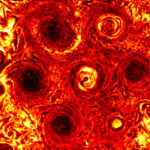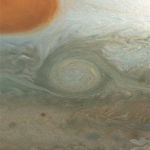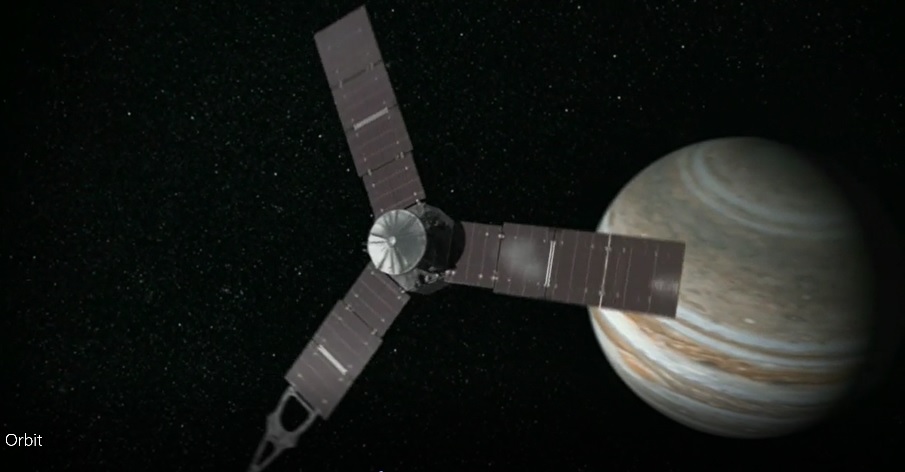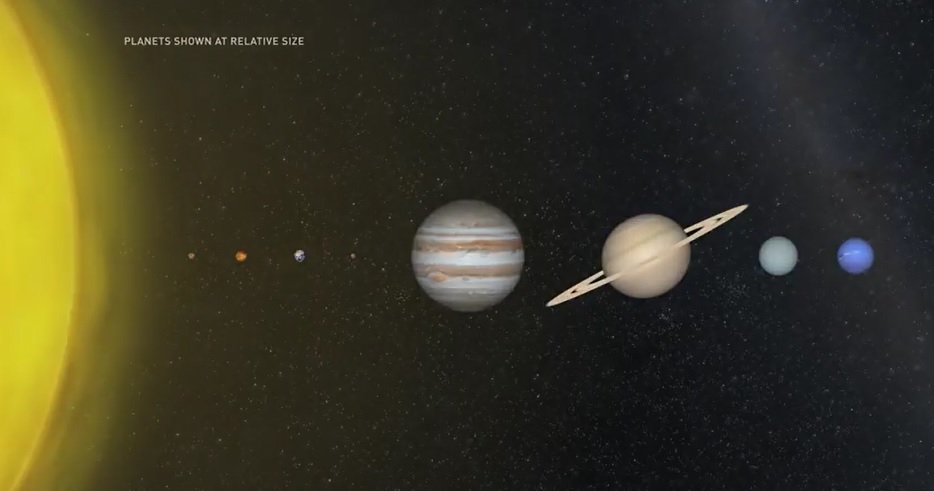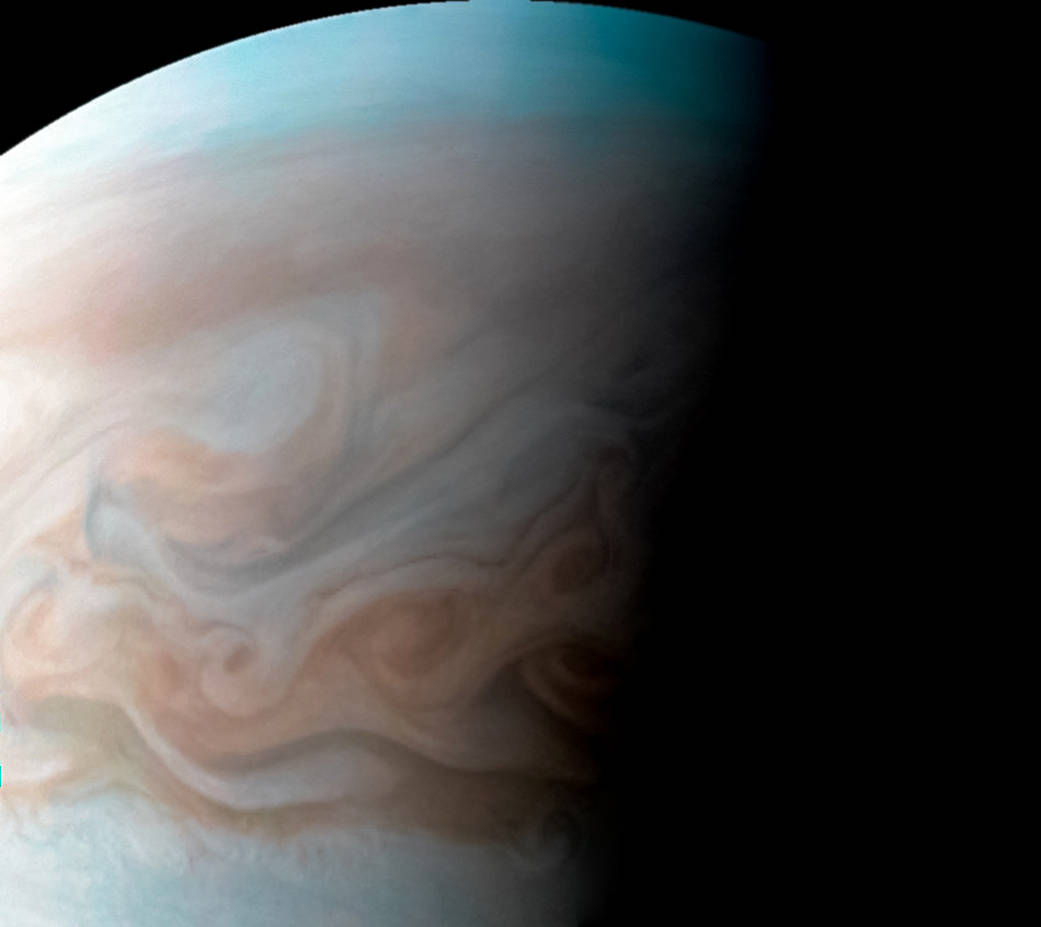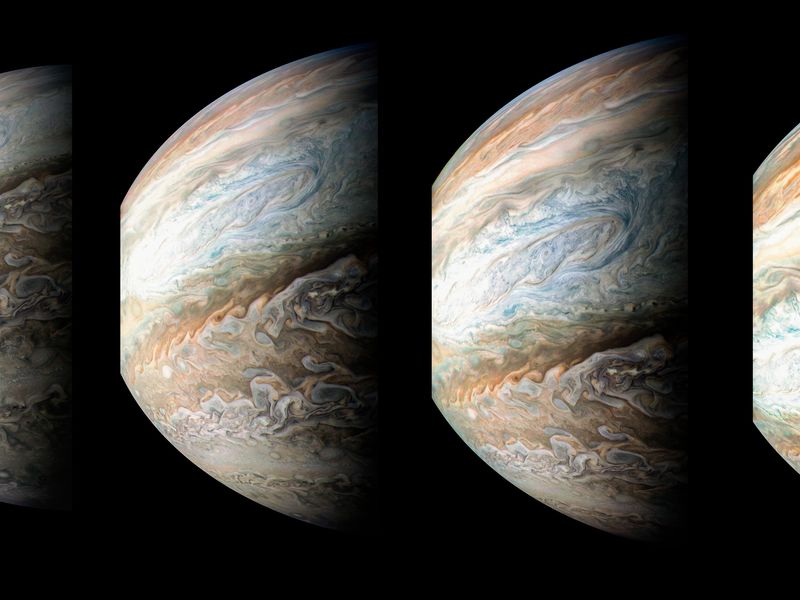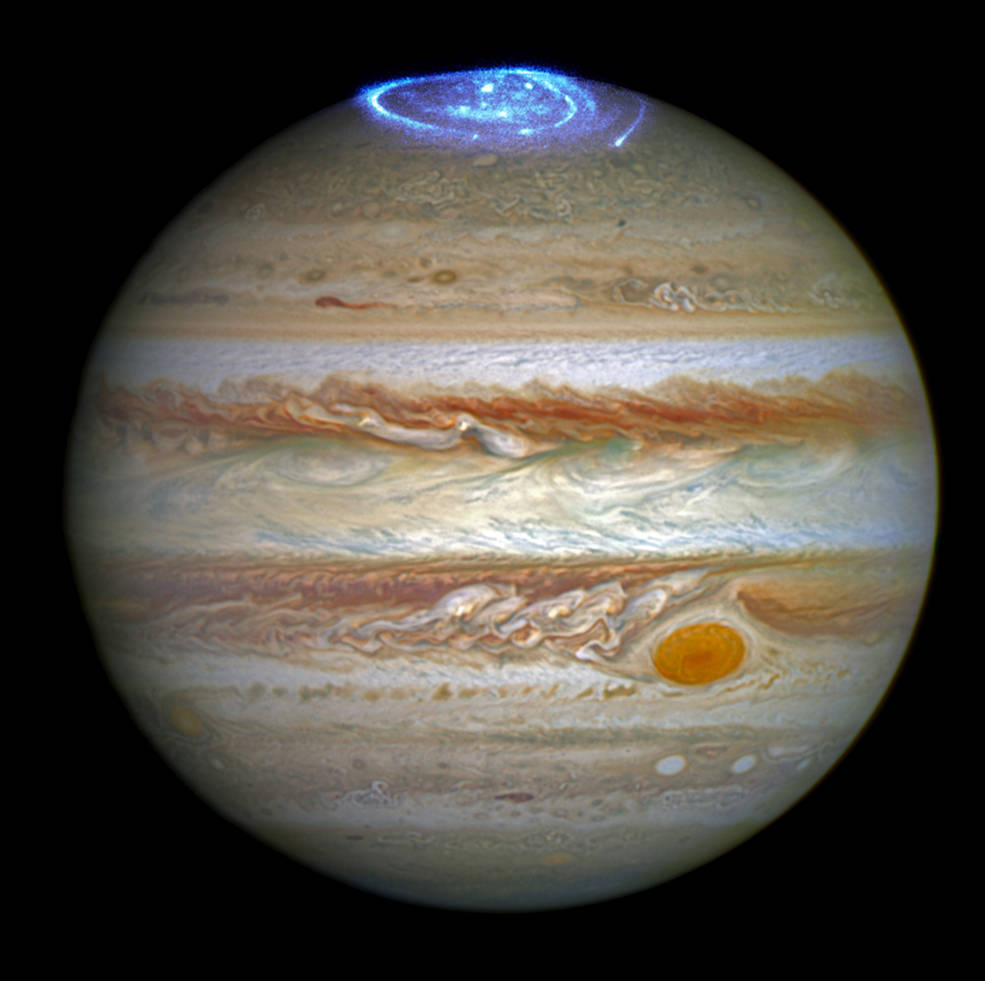NASAのサイトに木星に関する情報が久々に掲載されました。
とっても2017年の観測データ(しかも地球から!)を元にした研究成果をNature誌に発表したというものなので、いささか残念な心境です。
Jupiter’s Atmosphere Heats up under Solar Wind
トップ画像の説明
Scientists used red, blue and yellow to infuse this infrared image of Jupiter’s atmosphere (red and yellow indicate the hotter regions), which was recorded by the Cooled Mid-Infrared Camera and Spectrograph (COMICS) at the Subaru Telescope on the summit of Mauna Kea, Hawaii on Jan. 12, 2017.
Credits: NAOJ and NASA/JPL-Caltech
2017年1月12日にハワイのマウナケア山頂にあるすばる望遠鏡の冷却装置の付いた中赤外線カメラと分光器(COMICS)を用いて観測した木星の大気の 赤外 画像です。科学者たちが 赤、青、黄色 で画像処理しています(赤と黄色はより高温の領域を示す)。
記事本文
New Earth-based telescope observations show that auroras at Jupiter’s poles are heating the planet’s atmosphere to a greater depth than previously thought — and that it is a rapid response to the solar wind.
地球にある新型の望遠鏡による観測は、木星の極のオーロラがこれまで考えられていたよりもはるかに深くまで木星の大気を加熱していることを示しています – そしてそれは太陽風に敏感に反応している結果なのです。
“The solar wind impact at Jupiter is an extreme example of space weather,” said James Sinclair of NASA’s Jet Propulsion Laboratory in Pasadena, California, who led new research published April 8 in Nature Astronomy. “We’re seeing the solar wind having an effect deeper than is normally seen.”
4月8日にNature Astronomy誌で発表した新しい研究を主導しているカリフォルニア州パサデナにあるNASAのジェット推進研究所のジェームズ・シンクレアは「木星に与えている太陽風の影響は宇宙空間における気象変化の極端な例です」と述べました。 「我々は太陽風が木星の大気に、通常より深くまで影響を与えていることがわかりました」
Auroras at Earth’s poles (known as the aurora borealis at the North Pole and aurora australis at the South Pole) occur when the energetic particles blown out from the Sun (the solar wind) interact with and heat up the gases in the upper atmosphere. The same thing happens at Jupiter, but the new observations show the heating goes two or three times deeper down into its atmosphere than on Earth, into the lower level of Jupiter’s upper atmosphere, or stratosphere.
地球でのオーロラ(北極での北極光と南極での南極光)は、太陽(太陽風)から吹き出されてきたエネルギー粒子が地球の大気の上層部のガスと干渉して熱くなった際に生じます。木星でも同じことが起こりますが、新しい観測から、地球の2倍から3倍深く、木星の大気の上層部から下層部、つまり成層圏まで加熱されています。
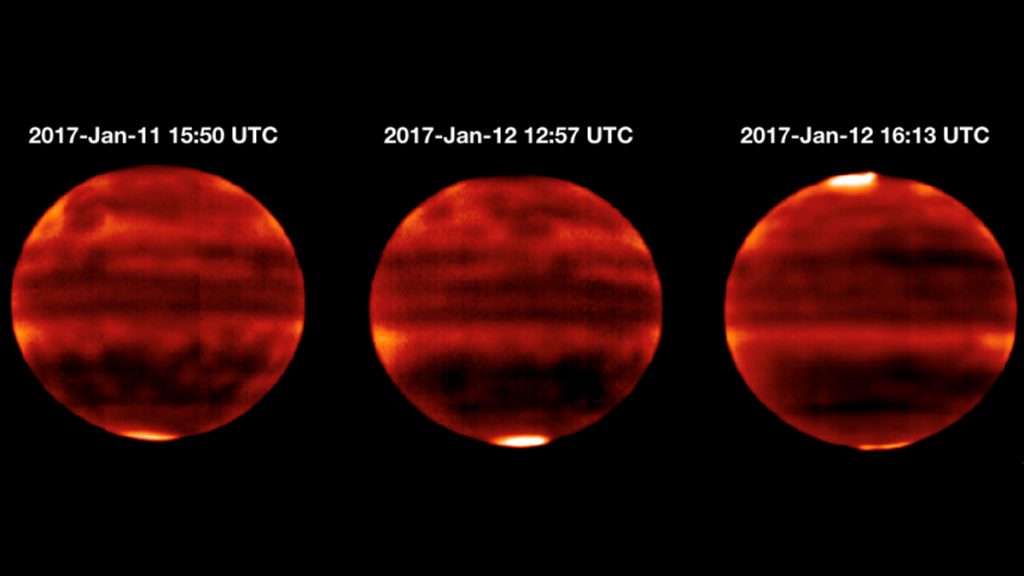
Sensitive to Jupiter’s stratospheric temperatures, these infrared images were recorded by the Cooled Mid-Infrared Camera and Spectrograph (COMICS) at the Subaru Telescope on the summit of Mauna Kea, Hawaii. Areas that are more yellow and red indicate the hotter regions.
木星の成層圏の温度を詳細に捉えているこれらの赤外線画像は、ハワイのマウナケア山頂にあるすばる望遠鏡の冷却装置の付いた中赤外線カメラと分光器(COMICS)により撮影されたものです。黄色と赤の領域はより温度が熱い領域を示しています。 【上図の説明文】
Understanding how the Sun’s constant outpouring of solar wind interacts with planetary environments is key to better understanding the very nature of how planets and their atmospheres evolve.
太陽が常に放出している太陽風が惑星を取り巻く環境にどう作用するかを理解することは、惑星とその大気がどのように変化するかの本質をよりよく理解するための鍵です。
“What is startling about the results is that we were able to associate for the first time the variations in solar wind and the response in the stratosphere — and that the response to these variations is so quick for such a large area,” said JPL’s Glenn Orton, co-author and part of the observing team.
「結果について驚くべきことは、多様な太陽風とそれに対する成層圏の変化を初めて関連付けることができたこと、そしてこれらの成層圏の変化がこのような広い範囲で非常に迅速に生じていることです」とチームの一員で共著者であるJPLのグレン・オルトンが述べました。
Within a day of the solar wind hitting Jupiter, the chemistry in its atmosphere changed and its temperature rose, the team found. An infrared image captured during their observing campaign in January, February and May of 2017 clearly shows hot spots near the poles, where Jupiter’s auroras are. The scientists based their findings on observations by the Subaru Telescope, atop the summit of Mauna Kea in Hawaii, which is operated by the National Astronomical Observatory of Japan.
太陽風が木星に当たってから1日以内に、大気中の化学的性質が変化し、温度が上昇すると観測チームはみています。 2017年1月、2月、5月に彼らが観測中に撮影した赤外線画像は、木星のオーロラがある極の近くのホットスポットをはっきりと映し出しています。科学者たちの研究結果は、ハワイのマウナケアの頂上にある日本の国立天文台によって運営されているすばる望遠鏡による観測結果に基づいています。
The telescope’s Cooled Mid-Infrared Camera and Spectograph (COMICS) recorded thermal images — which capture areas of higher or lower temperatures — of Jupiter’s stratosphere.
望遠鏡の冷却装置の付いた中赤外線カメラとスペクトログラフ(COMICS)は、木星の成層圏の温度が高い部分や低い部分の画像を記録しました。
“Such heating and chemical reactions may tell us something about other planets with harsh environments, and even early Earth,” said Yasumasa Kasaba of Tohoku University, who also worked on the observing team.
東北大学の笠羽康正は「このような加熱や化学反応を調べることで、 他の惑星の過酷な環境や、原始の地球の環境についてさえも知ることができるだろう」と語りました。
Gretchen McCartney
Jet Propulsion Laboratory, Pasadena, Calif.
818-393-6215
gretchen.p.mccartney@jpl.nasa.gov
Dwayne Brown / JoAnna Wendel
NASA Headquarters, Washington
202-358-1726 / 202-358-1003
Dwayne.c.brown@nasa.gov / joanna.r.wendel@nasa.gov
2019-059
Last Updated: April 10, 2019
Editor: Tony Greicius

